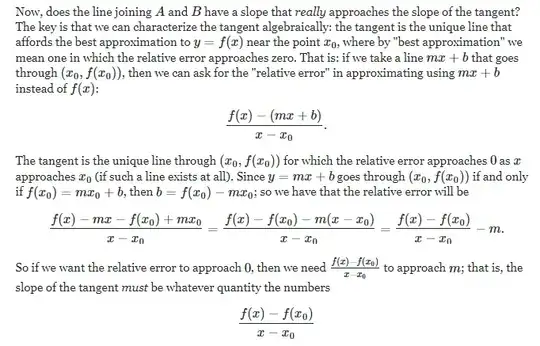I found a similar question and a beautiful answer here. However I'm not able to fully understand the answer and have a question on the selected answer at:

Consider all the lines going through point $(x_0,f(x_0))$. For every line, the relative error should approach $0$ as $x$ approaches $0$ because all these lines go through point $(x_0,f(x_0))$, the linear approximation equals the function at $x=x_0$. What is special about the tangent line in relation to the relative error? Why does Arturo say only the tangent line makes the relative error zero ?
an area around itearlier. but when we take the limit, it is exactly at $x=1$. If I may ask here, how does the limit capturearea around it? My brain automatically jumps to the conclusion that the limit cannot know the error magnitudes in neighborhood, eventhough it depends on the smoothness. pardon if I'm using the math words all wrong... – across Jul 12 '20 at 15:18